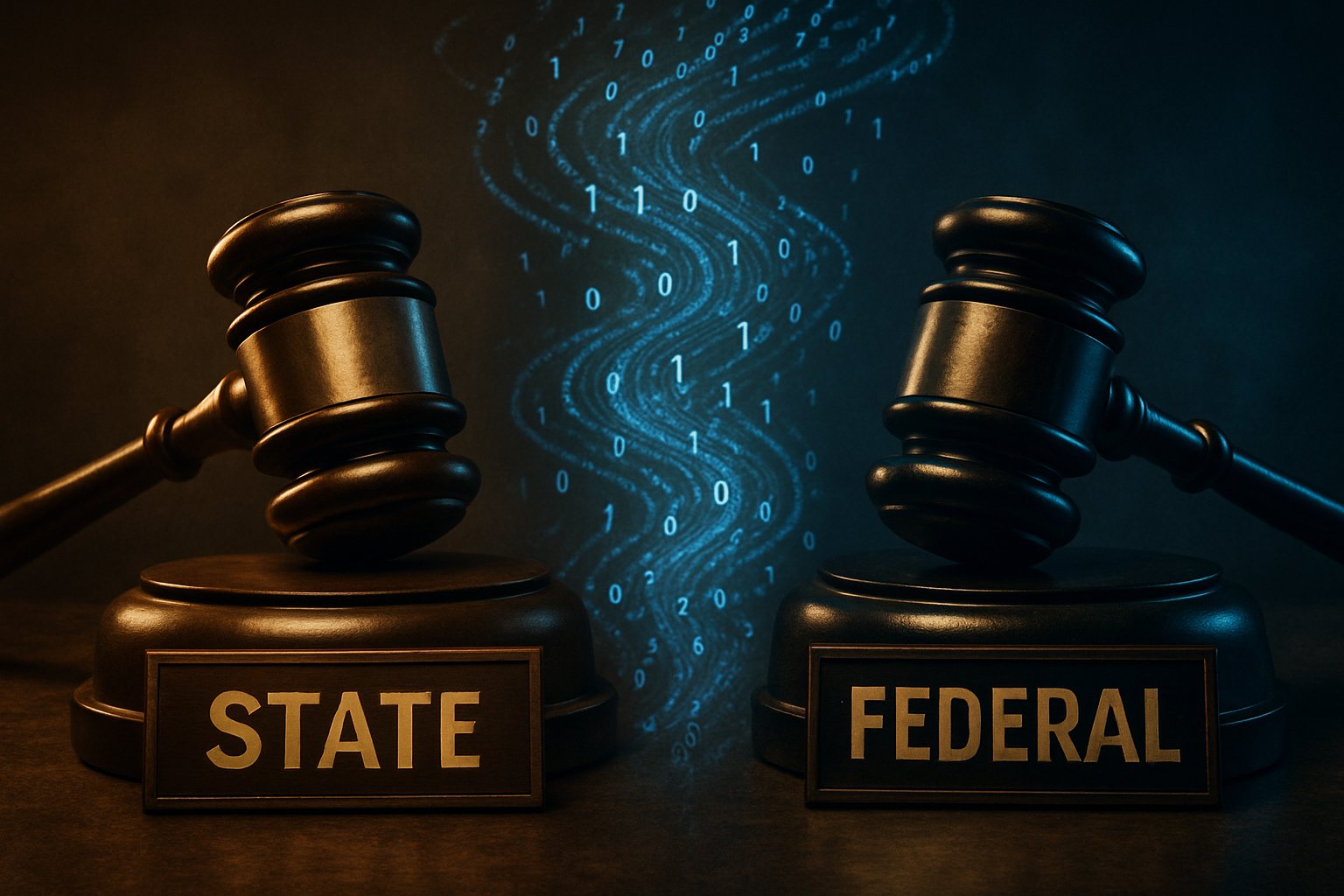
AI CERTS
4 hours ago
AI Policy Clash: state vs federal regulation heats up
Therefore, understanding the stakes has become essential for policymakers, counsel, and builders mapping product roadmaps for 2026. Subsequently, litigation risks may rise as agencies test their preemption power. Nevertheless, strategic preparation can convert uncertainty into a competitive advantage.
State Vs Federal Regulation
Policymakers have debated state vs federal regulation for decades, yet AI has intensified the conflict. Currently, hundreds of state bills target algorithmic fairness, transparency, and sector safeguards. Simultaneously, technology giants plead for one national standard to reduce compliance drag. Moreover, they argue that divergent mandates create innovation barriers across supply chains. Opponents counter that preemption could hollow out enforcement and erode civil rights overnight. Therefore, Congress faces a delicate balancing act between nationwide certainty and constitutional federalism. These tensions set the stage for every subsequent vote. The tug-of-war remains unresolved. Consequently, investors should follow each committee hearing closely.

State Patchwork Risks Spotlighted
CEOs frequently cite regulatory patchwork concerns when testifying on Capitol Hill. For example, R Street reported nearly 1,000 AI bills introduced across states during early 2025. Furthermore, the National Conference of State Legislatures counted 31 enacted measures in 2024 alone. Consequently, compliance teams confront overlapping notice periods, audit duties, and potential penalties. Moreover, startups fear that diverging procurement rules create new innovation barriers. A Microsoft executive warned that “a patchwork of state laws would slow us down” during spring hearings.
- 45 states introduced AI legislation in 2024
- Approximately 1,000 state AI bills surfaced by spring 2025
- 36–40 attorneys general opposed the federal moratorium
- Senate voted 99–1 against the freeze
Consequently, companies flag regulatory patchwork concerns during quarterly earnings calls. In contrast, some academics praise local experiments as laboratories for best practices. These diverging assessments keep state vs federal regulation debate in sharp focus. Fragmentation raises real costs. Nevertheless, it also reveals policy creativity the industry can emulate.
Critical Innovation Impacts Examined
Developers say uncertainty multiplies innovation barriers, raising capital costs and delaying model deployment. In fintech, conflicting bias audit timelines discourage interstate product launches. Meanwhile, health-tech founders worry that dual data disclosures will duplicate spending on compliance teams. However, consumer advocates argue that tough state rules drive safer, more inclusive design. Moreover, Senator Ed Markey insists innovation flourishes when users trust protections. The debate underscores how state vs federal regulation intersects directly with product strategy. Consequently, venture capital firms now embed policy risk scores in diligence checklists. Competitive timelines hinge on clarity. Therefore, harmonized baselines could accelerate responsible rollouts.
Controversial Ten-Year Freeze Rejected
The House reconciliation bill included a 10-year suspension proposal preempting new state AI laws. Additionally, supporters framed the 10-year suspension proposal as a “learning period” for national standards. However, a bipartisan coalition of 40 attorneys general blasted the move as dangerous. Senator Marsha Blackburn led the floor amendment that stripped the provision on July 1. Consequently, the Senate voted 99–1 to safeguard state authority. Nevertheless, the White House quickly issued an AI Action Plan urging agencies to discourage strict state measures. Therefore, critics argue the executive branch seeks an indirect 10-year suspension proposal through funding leverage. The failed moratorium remains influential in state vs federal regulation discourse. In contrast, agency carrots and sticks could revive the idea.
Power Dynamics Lobbying Showdown
Behind each amendment sits intense industry lobbying that shapes talking points and donation flows. OpenAI, Google, and Microsoft aligned with trade groups to promote single national rules. Moreover, the Chamber of Commerce published memos warning of regulatory patchwork concerns hurting exports. Meanwhile, Consumer Reports and the ACLU mobilized grassroots campaigns supporting robust state enforcement. Furthermore, senators facing reelection balanced innovation barriers with claims against hometown privacy scandals. Additionally, investigative filings reveal industry lobbying expenditures eclipsed $100 million during the first half of 2025. In contrast, Representative Brett Guthrie defended the 10-year suspension proposal during committee markup.
- Pro preemption: TechNet, CCIA, Chamber
- Anti-preemption: NCSL, Consumer Reports, ACLU
- Key lawmakers: Blackburn, Markey, Cruz
Consequently, lobbyists will keep shaping the state vs federal regulation narrative through targeted media campaigns. Money influences momentum. Nevertheless, voter sentiment can still redirect legislative paths.
Legal Battles Loom Ahead
Constitutional scholars predict litigation if agencies attempt sweeping preemption under existing statutes. Consequently, courts will scrutinize whether funding conditions unlawfully coerce states. Moreover, states may sue to block grants tied to relaxation of privacy safeguards. Meanwhile, trade groups could challenge aggressive state rules as burdens on interstate commerce. Therefore, the judiciary may become the ultimate referee in the state vs federal regulation contest. Analysts advise executives to monitor docket alerts from the Fifth and D.C. Circuits. Case outcomes could reshape timelines. In contrast, settlements might foster incremental harmonization.
Strategic Roadmap For Leaders
Boards must craft playbooks that absorb shifting requirements without stalling product launches. Firstly, map every applicable state law and note overlapping disclosure triggers. Secondly, establish agile governance that aligns with potential federal baselines yet preserves local flexibility. Additionally, monitor agency guidance and budget riders for covert 10-year suspension proposal revivals. Moreover, engage in industry lobbying coalitions to steer standards toward workable risk tiers. Professionals can enhance their expertise with the AI Legal Specialist™ certification. Consequently, teams gain evidence-based frameworks for impact assessments and audit protocols. Aligning policy teams early clarifies obligations under state vs federal regulation frameworks. Preparedness reduces surprises. Therefore, proactive governance converts uncertain regulation into market leadership.
The 2025 milestones prove the state vs federal regulation chess match is far from checkmate. House backers of the 10-year suspension proposal lost round one, yet executive agencies still press. Meanwhile, states continue passing niche laws that address deepfakes, transparency, and algorithmic bias. Consequently, regulatory patchwork concerns persist even after the Senate vote. Nevertheless, companies can mitigate innovation barriers through proactive monitoring and stakeholder dialogue. Therefore, leaders should secure policy expertise and pursue certifications that deepen legal fluency. Visit our resources and claim the AI Legal Specialist™ badge to stay ahead of evolving state vs federal regulation.



